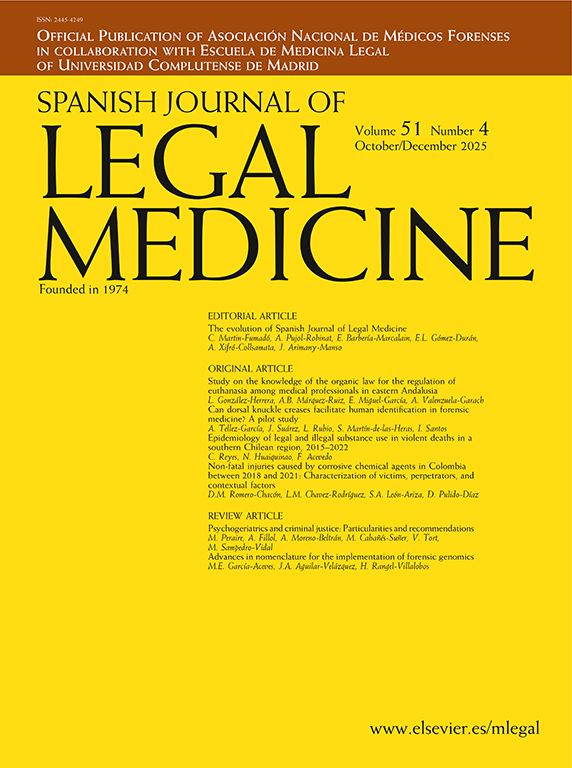The text explores the importance of scientific publishing in the medical field and the dual role of the author/reviewer. The reviewer's work is crucial, as their objective is to assist other authors in improving their manuscripts and ensuring that methods are reproducible, which allows for the validation of results in future studies. In the interest of greater transparency, we emphasise the role of publication guidelines, such as CONSORT, which promote rigorous and reproducible research. There is substantial evidence demonstrating that adherence to these guidelines can enhance the quality of articles. Finally, researchers are encouraged to contribute honestly to the advancement of knowledge and best clinical practices, with the hope that their findings will translate into public health benefits.
El texto explora la importancia de la publicación científica en el ámbito médico, y el papel dual del autor-revisor. La labor del revisor es crucial, ya que su objetivo es ayudar a otros autores a mejorar sus manuscritos y asegurar que los métodos sean reproducibles, lo que eventualmente permite replicar, y así validar, los resultados en futuros estudios. En aras de mayor transparencia, insistimos en el papel de las guías de publicación, como CONSORT, que promueven la investigación íntegra y reproducible. Existe evidencia que demuestra que seguir estas guías aumenta la calidad de los artículos. Finalmente, alentamos a los investigadores a contribuir al avance del conocimiento, con la esperanza de que sus hallazgos se traduzcan en beneficios para las buenas prácticas clínicas y, por ende, para la salud.
Why do we write academic articles? Typically, especially in the early days, you follow the not-so-subtle advice of “publish or perish” and try to get ahead in your career by building up your CV bit by bit. You have read upcoming journals, identified articles that interest you, and assessed topics that you feel you can contribute to. You have also identified colleagues that you can collaborate with and ask: “What can we do together to move forward?”. Finally, there is the opportunity to become a reviewer for the journals you like best. To those who are attracted by this essential work, we say: if they send you an article, always respond, even if it is to say that it is not your subject or that you are not available at the moment. Don't think you're qualified? Don't worry, it's not your job to decide which articles get published. That is the job of the editors. The reviewer's job is to help authors improve their manuscript and to advise the journal in selecting those articles that can help improve good clinical practice for its readers. Ultimately, these first-time authors subscribe to a database of reviewers, such as Kudos,1 where editors of other journals can find them and send them articles that fit their profile. In short, helping other authors improve their articles also helps you to learn how to write.
Suppose now that you are convinced that you can improve patient care, and you want to spread the word and set yourself apart from your colleagues. For example, let's imagine that after much hard work you achieve a spectacular cure, so rare that your colleagues describe it as “almost miraculous”. Great, it deserves all the celebration and congratulations. However, if we as a society want to benefit future patients, we need to get permission from the authorities to carry out this intervention, and the first requirement is to replicate these results in other patients. Better still if this is done by others, for example, those who will have to undertake it in the future. This is the only scientific requirement: that other authors replicate your results, which requires reporting methods in a transparent and reproducible way. This is the contribution of a good reviewer: to help authors report their methods in a reproducible way. In short, the role of peer reviewers and editors is to ensure that authors provide enough detail to allow their methods to be reproduced now, and then to allow the more disbelieving to investigate the replicability of the results for themselves. Have you added so much detail that reading the methods can become tedious? Consider including an appendix, or even better, an online repository, such as Zenodo.2 If others go on to replicate your results, you will stand out as a scientist.
The editorial board of the ICMJE,3 which includes the major publishing groups (Elsevier, Springer-Nature, NEJM, BMJ, Sage, Wiley, etc.), asks authors of their journals to follow the recommendations of the EQUATOR guidelines.4 Each clinical objective – be it intervention, diagnosis, or prognosis – has its own guidelines: for example, CONSORT, STARD, or TRIPOD include a checklist of key points to reproduce the methods of each type of study. We postulate that the most ambitious goal of editorial review is to help the author to report according to the relevant publication guidelines, so that others can reproduce the methods and ultimately the results, the acid test of science.
The consensus used by EQUATOR starts by inviting an “eclectic” group of scientific experts in the field: clinicians, biologists, methodologists, epidemiologists, statisticians, regulators, etc., including patient representatives where possible. Then, in successive rounds, they select the key points that, in the opinion of the majority of these experts, make each type of study reproducible. This opinion is based on empirical information to identify the characteristics of studies that have been replicated and those that have not. They also update their recommendations rapidly. CONSORT is the paradigmatic example; it was published in 1996 and updated in 2001 and 2010, and is about to be updated again. It has also been influenced by the International Council for Harmonisation of Technical Requirements for Pharmaceuticals for Human Use.5 The guidelines are based on the power of consensus, the constructive confrontation of different points of view; in 2 words: collective intelligence.
We contribute to their dissemination. Elsevier has published 2 open access supplements. In 2005, Medicina Clínica6 published a compilation of the publication guidelines in force at the time. In 2021, Medicina Clínica Práctica7 published 9 short notes highlighting what we consider to be the most important of these guidelines. Subsequently, our Universitat Politècnica de Catalunya published the short open access text “Estadística y Salud”,8 in Spanish, which reorganises and summarises the vision of the guidelines on clinical scientific methods. We are finalising its second edition, now in English, completely revised by a larger and more diverse group of authors.
At another level, we have presented 3 studies9–11 that provide empirical evidence of the beneficial effects of guideline adherence. Combining the results of the first 2,12 based on a similar intervention in clinical medicine, we estimated that the introduction of guidelines into the review process increased citations by 43% compared to referencing (the usual process without guideline support). Taking into account the uncertainty associated with the randomisation process and the limited size of both studies, the effect could range from a modest 3% increase to a generous 98% increase, almost double. We talk about citations because we have systems to measure them, although we do not believe this the best way to measure a researcher's clinical impact:13 if only we had a good measure of the impact of articles in this process called “good clinical practice”. Or better still, of their ultimate impact on the quality and quantity of life of our fellow citizens, real answers of interest.
We hope that this brief article has inspired you to contribute to better research for the benefit of our health. If you do so honestly, you can only expect the desired positive effects of research, as the unexpected, perhaps negative, effects will quickly fade away. Good luck!
Funding2021 SGR 01421: Grup de Recerca en Bioestadística i Bioinformàtica (GRBIO).
Please cite this article as: Cobo E, González JA. Practical tips for writing a scientific article. Revista Española de Medicina Legal. 2024. https://doi.org/10.1016/j.remle.2024.11.004.



